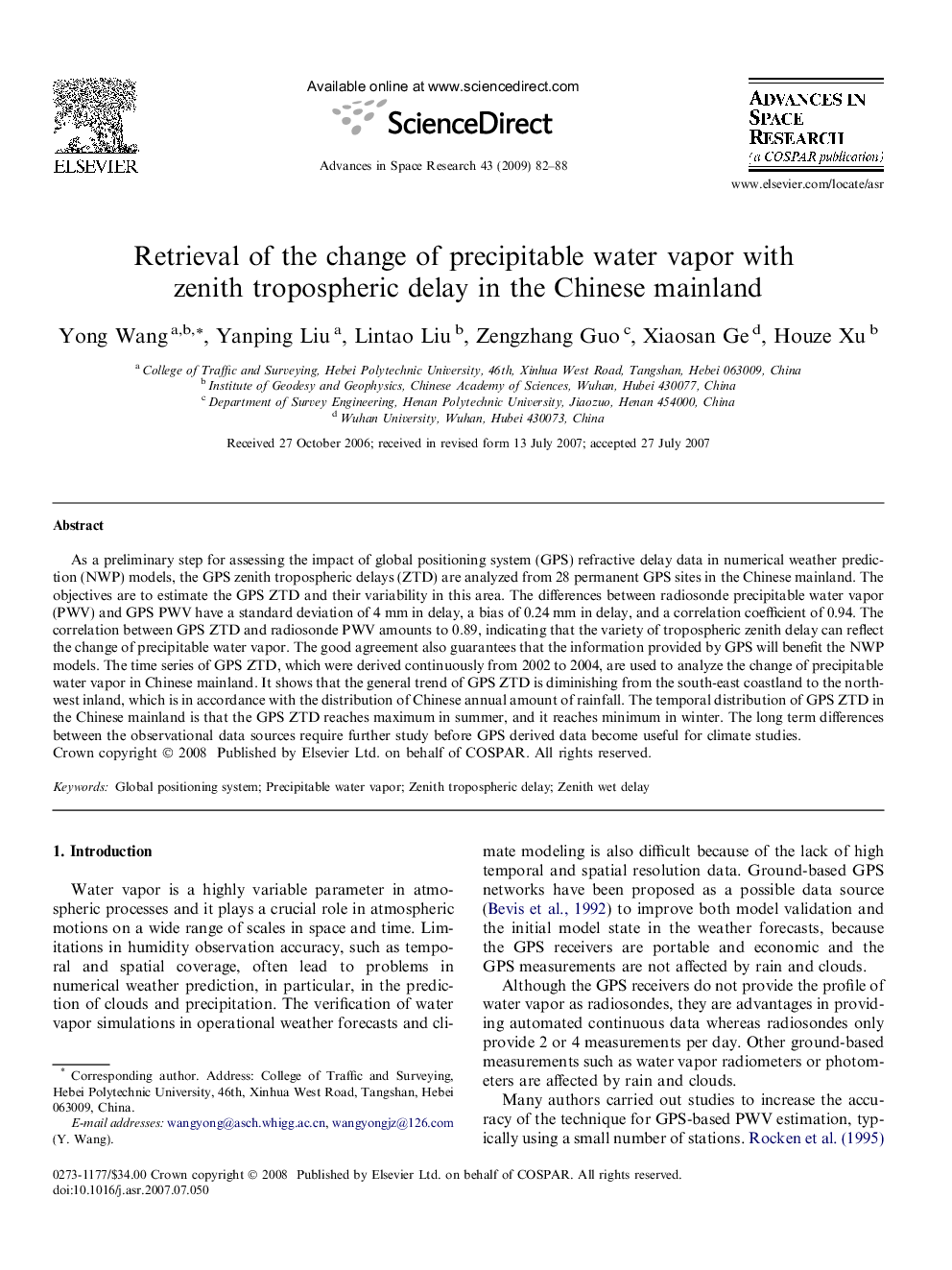| Article ID | Journal | Published Year | Pages | File Type |
|---|---|---|---|---|
| 1765790 | Advances in Space Research | 2009 | 7 Pages |
As a preliminary step for assessing the impact of global positioning system (GPS) refractive delay data in numerical weather prediction (NWP) models, the GPS zenith tropospheric delays (ZTD) are analyzed from 28 permanent GPS sites in the Chinese mainland. The objectives are to estimate the GPS ZTD and their variability in this area. The differences between radiosonde precipitable water vapor (PWV) and GPS PWV have a standard deviation of 4 mm in delay, a bias of 0.24 mm in delay, and a correlation coefficient of 0.94. The correlation between GPS ZTD and radiosonde PWV amounts to 0.89, indicating that the variety of tropospheric zenith delay can reflect the change of precipitable water vapor. The good agreement also guarantees that the information provided by GPS will benefit the NWP models. The time series of GPS ZTD, which were derived continuously from 2002 to 2004, are used to analyze the change of precipitable water vapor in Chinese mainland. It shows that the general trend of GPS ZTD is diminishing from the south-east coastland to the north-west inland, which is in accordance with the distribution of Chinese annual amount of rainfall. The temporal distribution of GPS ZTD in the Chinese mainland is that the GPS ZTD reaches maximum in summer, and it reaches minimum in winter. The long term differences between the observational data sources require further study before GPS derived data become useful for climate studies.
